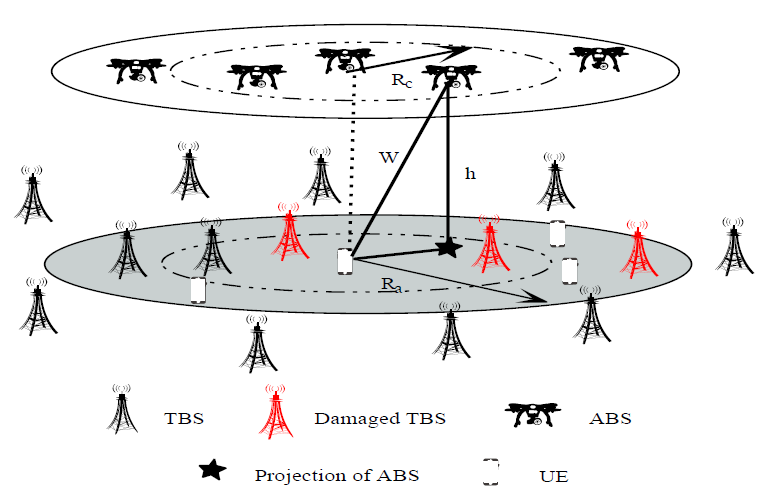Research progress on UAV emergency communication
Unmanned aerial vehicle (UAV) communication, as an implementation method of the space-Integrated-ground Information networks, can be used for emergency communication in post disaster areas to solve serious problems, such as insufficient coverage of damaged base stations and transmission link interruptions. This study proposed a cache-enabled UAV emergency communication network framework. A limited number of UAVs equipped with cache units were deployed overlaid the partially destructed cellular network, which helps to perform the storage, processing, and transmission of the data information. A content-centric association strategy were designed within the specified circular cache area by comprehensively considering the cache status and channel conditions. Based on the framework, the performance of the offloading probability and the average rate were investigated in the instability network status. The height and the density of the UAVs per unit area were optimized, providing important basis for the reconstruction work of the post disaster communication.

This study has analyzed the system performance of the cache-enabled UAV network, providing new insights for exploring the UAV emergency communication. The research findings have been published online in IEEE Transactions on Vehicular Technology(2023,Impact Factor: 6.8, JCR Q1). The first and the corresponding author of the paper is Fan Congshan, engineer from the department of the advanced network technology and application. The second author of the paper is Zhou Xu, professor-level researcher from the department of the advanced network technology and application. This work was supported by the National Natural Science Foundation of China.
Publication:
Congshan Fan,Xu Zhou,Tiankui Zhang,Wenqiang Yi,Yuanwei Liu. " Cache-enabled UAV Emergency Communication Networks: Performance Analysis with Stochastic Geometry." IEEE Transactions on Vehicular Technology. 2023.
